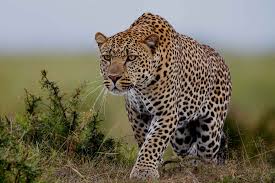

Tarangire National Park
Tarangire National Park, situated in northern Tanzania, is a hidden gem among East Africa’s renowned safari destinations. Spanning approximately 2,850 square kilometers, the park is named after the Tarangire River that winds through its heart, providing a lifeline for an astonishing diversity of wildlife. Often overshadowed by its more famous neighbors, Tarangire is a treasure trove of untamed wilderness and captivating landscapes.
Geography and Climate:
The landscape of Tarangire is characterized by vast savannas, open grasslands, and ancient baobab trees that stand like giants across the horizon. The park’s terrain ranges from hilly areas to swampy floodplains, offering an assortment of habitats for the park’s inhabitants.
Like other parks in the region, Tarangire experiences distinct wet and dry seasons. The dry season, from June to October, draws wildlife to the Tarangire River and other water sources, creating unparalleled opportunities for wildlife viewing. The wet season, from November to May, transforms the park into a lush paradise, with verdant vegetation and migratory birds making it a haven for birdwatchers.
Wildlife:
Despite its relatively smaller size, Tarangire boasts an impressive diversity of wildlife. The park is renowned for its large herds of elephants, often considered some of the largest concentrations in East Africa. Visitors are treated to memorable sights of these gentle giants as they traverse the landscape in search of water and food.
Alongside elephants, Tarangire is also home to a myriad of other wildlife species, including lions, leopards, cheetahs, giraffes, zebras, wildebeests, and Cape buffaloes. The park’s varied habitats support an abundance of herbivores, which, in turn, attract predators, creating a delicate balance in the circle of life.
Birdlife:
Tarangire National Park is a paradise for bird enthusiasts, with over 550 bird species recorded within its boundaries. During the wet season, the park becomes a haven for migratory bird species, transforming it into a vibrant tapestry of colors and melodies. From vibrant bee-eaters to majestic raptors soaring high above, birdwatchers will find a plethora of feathered wonders to admire.
Tarangire River:
The Tarangire River plays a vital role in shaping the park’s ecosystem. During the dry season, when water sources become scarce, the river becomes a lifeline for both wildlife and the Maasai communities living on the park’s periphery. Visitors can witness large gatherings of animals, including elephants, wildebeests, and zebras, as they quench their thirst and satisfy their daily water needs.
Conservation and Challenges:
Preserving Tarangire’s unique ecosystem is a priority for Tanzania’s government and conservation organizations. Protecting the park’s wildlife corridors and habitats is essential to ensuring the survival of the diverse flora and fauna that call Tarangire home.
However, the park faces challenges such as human-wildlife conflict, habitat degradation, and illegal poaching. Encouraging sustainable tourism and community involvement in conservation efforts can help address these challenges and secure the park’s future for generations to come.
Safari Experiences:
Tarangire offers visitors a more intimate and secluded safari experience compared to some of the larger and busier parks in the region. Guided game drives, walking safaris, and night drives allow visitors to immerse themselves in the untamed wilderness and witness the captivating behaviors of the park’s wildlife.
Conclusion:
Tarangire National Park may be lesser-known, but it is no less remarkable than its more famous counterparts. Its unique landscapes, abundant wildlife, and diverse birdlife make it a destination worth exploring for those seeking an authentic safari experience. As we cherish and protect Tarangire’s wilderness, we contribute to the preservation of East Africa’s natural heritage and support the delicate balance of life that thrives within its borders.








